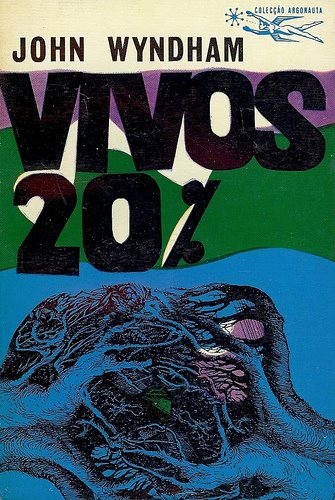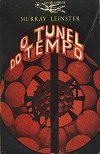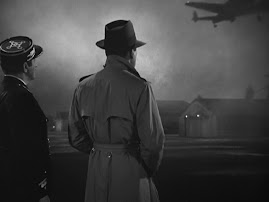The Homegrown Young Radicals Of Next-Gen Jihad
By Marc Sageman
We are fighting the wrong foe. Over the past six years, the nature of the international Islamist terrorist threat to the West has changed dramatically, but Western governments are still fighting the last war -- set up to fight an old al-Qaeda that is now largely contained. Unless we understand this sea change, we will not be able to ward off the new menace.
The version of al-Qaeda that Osama bin Laden founded is a fading force. After a week in which five detainees who allegedly planned the Sept. 11, 2001, atrocities were arraigned before a U.S. military tribunal at Guantanamo Bay, Cuba, it's worth remembering that the terrorists behind 9/11 were mostly young, well-educated middle-class expatriates from Muslim countries who had become radicalized abroad, especially in the West. Such key 9/11 plotters as Mohamed Atta, Ramzi Binalshibh, Ziad Jarrah and Marwan al-Shehhi met and became radicalized as students in Hamburg, then went to Afghanistan looking for al-Qaeda. But over the past six years, most of the professional terrorists who fit this profile have been eliminated during the U.S.-led manhunt for "high-value targets." The few that remain are huddled in the Afghan-Pakistani border area, struggling to extend their reach beyond Pakistan.
That old guard is still dangerous and still plotting spectacular attacks. But it is the new wave that more urgently requires our attention. This cohort is composed of homegrown young wannabes who dream of glory and adventure, who yearn to belong to a heroic vanguard and to root their lives in a greater sense of meaning. Inspired by tales of past heroism, they hope to emulate their predecessors, even though, for the most part, they can no longer link up with al-Qaeda Central in the Pakistani badlands. Their potential numbers are so great that they must now be seen as the main terrorist threat to the West.
This threat is not well understood by U.S. policymakers. After 9/11, I realized that spectacular instances of collective violence such as terrorism and the Holocaust tend to be the product of small-group dynamics, not individual action. (As a former CIA case officer who ran programs in Afghanistan in the 1980s, I learned how hard it was to motivate groups to perform field operations.) I began putting together graphs and charts to see how friendships and kinship groups had shaped al-Qaeda's networks. I was able to recognize these concepts precisely because of my isolation from the U.S. government, which was focusing on old, top-down, command-and-control theories. And I worry again today that those charged with protecting us are not being imaginative or rigorous enough to understand the next generation of jihadists.
Unlike their pre-9/11 predecessors, today's would-be terrorists are usually the poorly educated teenage children of unskilled and secular Muslim immigrants. They have been born, raised and radicalized in their host countries (unlike, say, Atta, an Egyptian who recoiled at modern Germany). This new generation's youth culture celebrates a sort of "jihadist cool."
Consider the "Hofstad Netwerk" in the Netherlands, which I believe is typical of this new wave. It consists mostly of young people who were born in Holland or immigrated to that country very early in life. They met around their neighborhoods, in Internet cafes or in online chat rooms, then self-radicalized through their admiration for the supposed Islamist heroes fighting the West. One man linked to this cohort, Mohammed Bouyeri, repeatedly shot the Dutch filmmaker Theo van Gogh in 2004 on an Amsterdam street. Other members of this informal network reportedly planned to murder prominent Dutch politicians and bomb the Dutch parliament, a nuclear power plant and Amsterdam's international airport.
Or consider another network that sprang up in placid surroundings: the group of second-generation immigrant men and youths in the Toronto suburbs who Canadian authorities allege plotted to set off truck bombs in Toronto, bomb the Canadian Parliament and kill Prime Minister Stephen Harper. They reportedly spent time praising their terrorist heroes on the Internet and living out mujaheddin fantasies by playing paintball games in rural Ontario.
What makes next-gen terrorists tick? How did these ordinary kids come to be so attracted to political violence? The process of radicalization consists of four prongs, which need not occur in sequence. Here's the recipe: having a sense of moral outrage; seeing this anger as part of a "war on Islam"; believing that this view is consistent with one's everyday grievances; and mobilizing through networks.
Many Muslims feel a powerful sense of moral outrage at the treatment of their coreligionists, be it the sight of U.S. troops killing Muslims in Iraq or the aftermath of police harassment of local mosques. To lead to political violence, a next-generation jihadist must come to believe one simple sound bite: that there is a "war against Islam."
Unlike their fanatical predecessors in the old al-Qaeda, the new terrorists are not particularly religious. The defendants in the Hofstad trials, the March 2004 Madrid bombing trial, the Toronto case and the many trials in Britain are not intellectuals, let alone Islamic scholars. Many became religious only a few months before their arrests, and some are not religious at all. The new generation is not likely to be swayed by abstract arguments. Young jihadist wannabes do not go to Iraq to have theological debates; they go there to blow themselves up.
The problem has been worse in Europe than in the United States. In the land of the American dream and the melting pot, a broader, more inclusive view of American-ness undermines the jihadist insistence that the U.S. government is at war with its Muslim citizens. Notwithstanding some ugly jeering by nativist bigots and some clumsy profiling by law enforcement, ordinary Muslim Americans simply do not feel some "war on Islam" in their daily experiences.
But things are far less cheerful in Europe. The children of unskilled Muslim immigrants there face discrimination across the continent, resulting in striking unemployment rates. Many non-Muslim Europeans resent having to compete with Muslim immigrants for low-level jobs and worry that poor immigrant suburbs mean higher crime rates. Anti-immigrant sentiment, which propelled far-right parties to win around 20 percent of the vote in contests in France, Austria and Switzerland in recent years, only reinforces the message of rejection -- and produces grist for the terrorists' mill.
There are many angry young Muslims in the world, of course. What transforms a tiny number of them into terrorists is mobilization by networks. Until a few years ago, these networks were made up of face-to-face groups: local gangs of young immigrants such as the Hofstad group or expatriate students such as the Hamburg cell that planned 9/11. These cliques of friends became radicalized together. The group acted as an echo chamber -- amplifying grievances, intensifying members' bonds to one another, deepening their rejection of the values of the host society and making it easier to gradually separate themselves from it.
Over the past two or three years, face-to-face radicalization has started to be replaced by online radicalization. People's beliefs used to be changed in small cliques; now they are being altered in jihadist Internet forums. These forums have become virtual marketplaces for extremist ideas -- the "invisible hand" organizing terrorist activities worldwide. They are transforming the terrorist movement, attracting ever younger members and women, who can now join in the discussions.
The West has successfully contained the terrorists who perpetrated 9/11. But al-Qaeda has adapted from the bottom up, producing a network that's scattered, disconnected and decentralized. The new jihadist movement doesn't have an operational leader, but it is every bit as dangerous as the old one.
Marc Sageman is a sociologist, forensic psychiatrist and scholar in residence at the New York Police Department. He is the author of "Understanding Terror Networks" and "Leaderless Jihad."
taken from:B'NAI ELIM - Children of the Mighty (http://bnaielim.blogspot.com/)





























































.jpg)

















